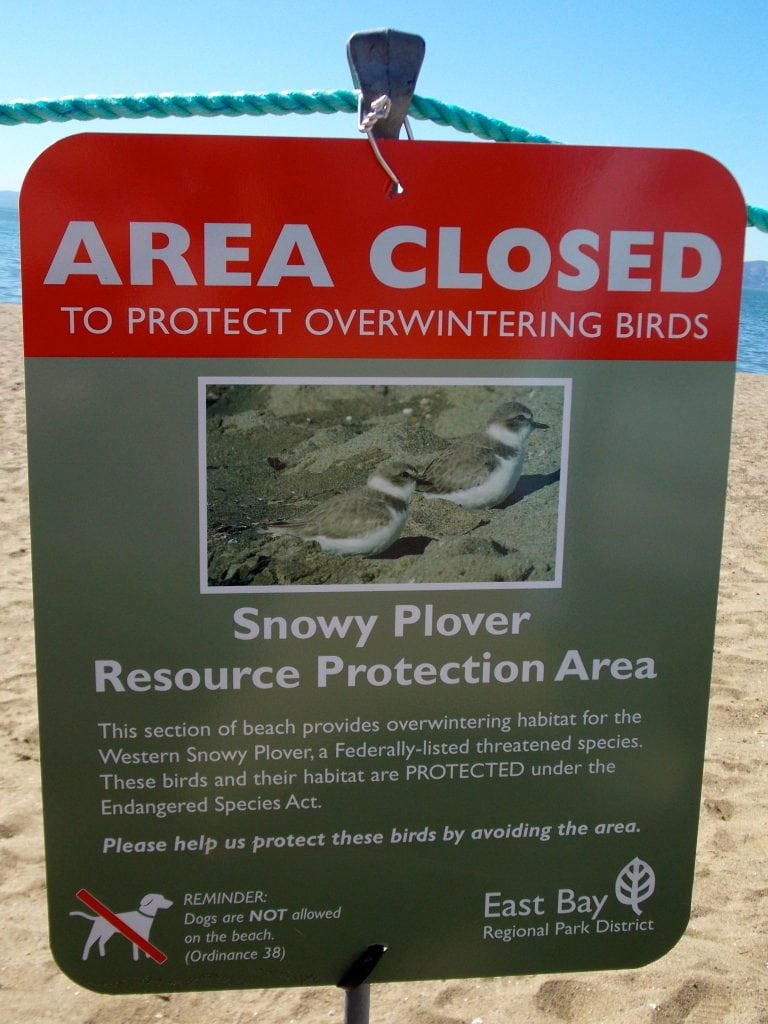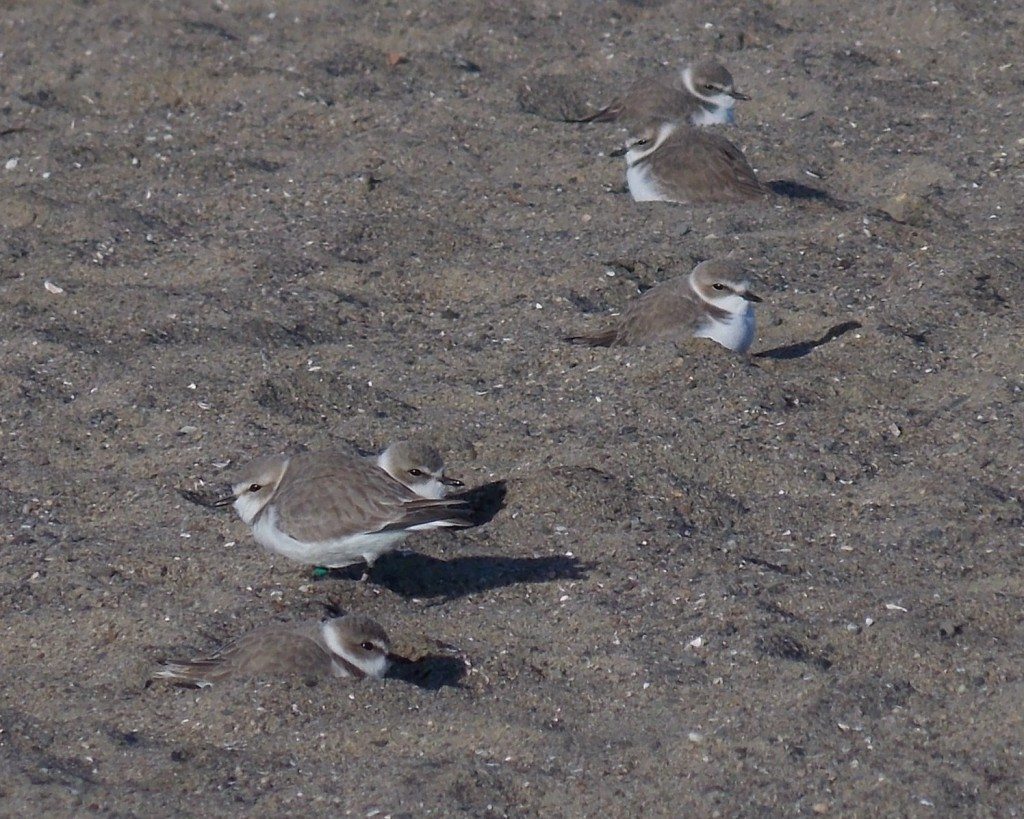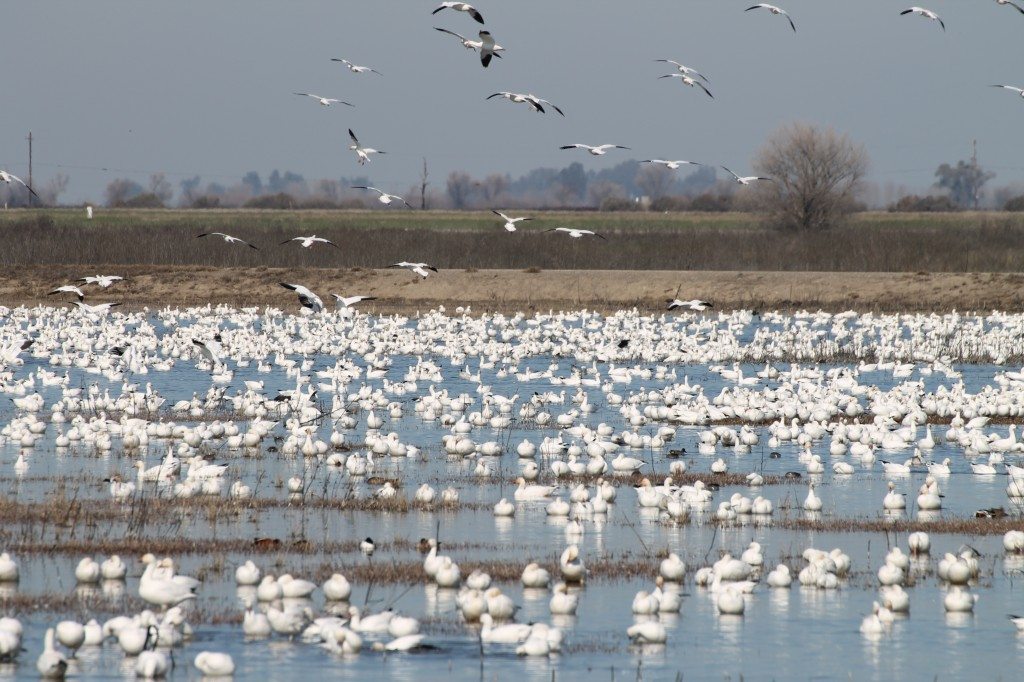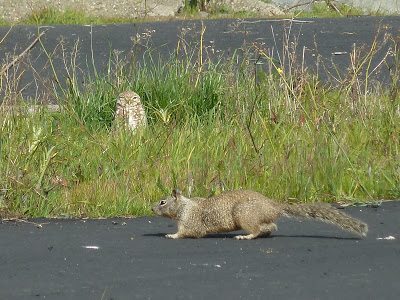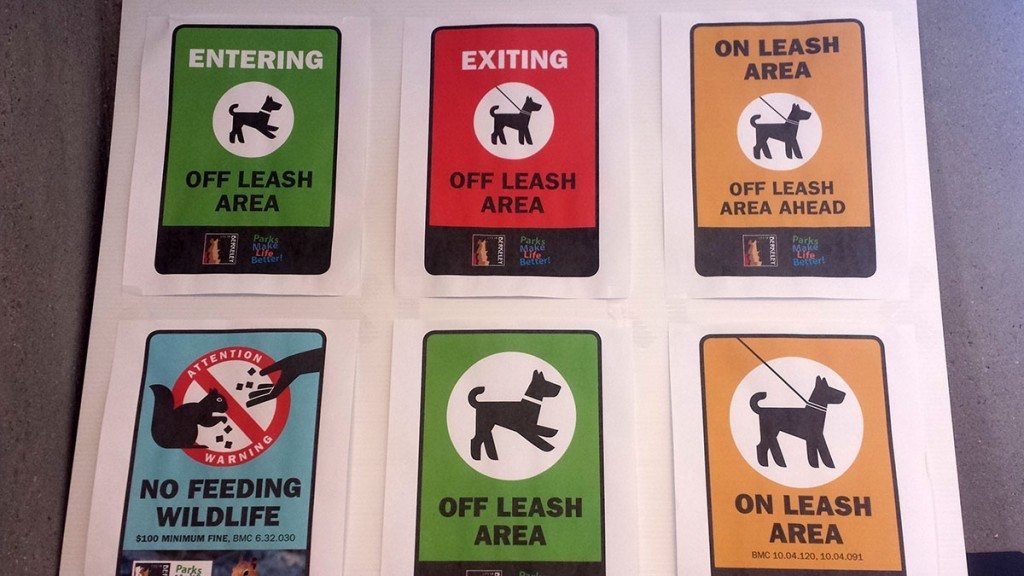Why so many Acorn Woodpeckers?
By Bruce Mast
They are the clowns of the oak savannah — Acorn Woodpeckers — with their harlequin faces, gregarious habits, and off-kilter laughing calls that inspired Woody Woodpecker. According to Birds of North America, the “Acorn Woodpecker is a common, conspicuous inhabitant of foothill and montane woodlands from northwestern Oregon, California, the American Southwest, and western Mexico through the highlands of Central America to the northern Andes in Colombia. Throughout its range, this species is closely associated with oaks (genus Quercus) and is most commonly found in pine-oak woodlands.”
Here in the Bay Area, Acorn Woodpecker colonies are fairly common in the East Bay hills and the western slopes of Mount Diablo, particularly where there are concentrations of valley oaks. South of Livermore, they can be locally abundant in the Diablo range. They are rare in Tilden and Redwood Regional Parks and practically unheard of west of the Hayward Fault.
So what’s up with the recent spate of Acorn Woodpecker sightings in urban San Francisco and the East Bay lowlands?
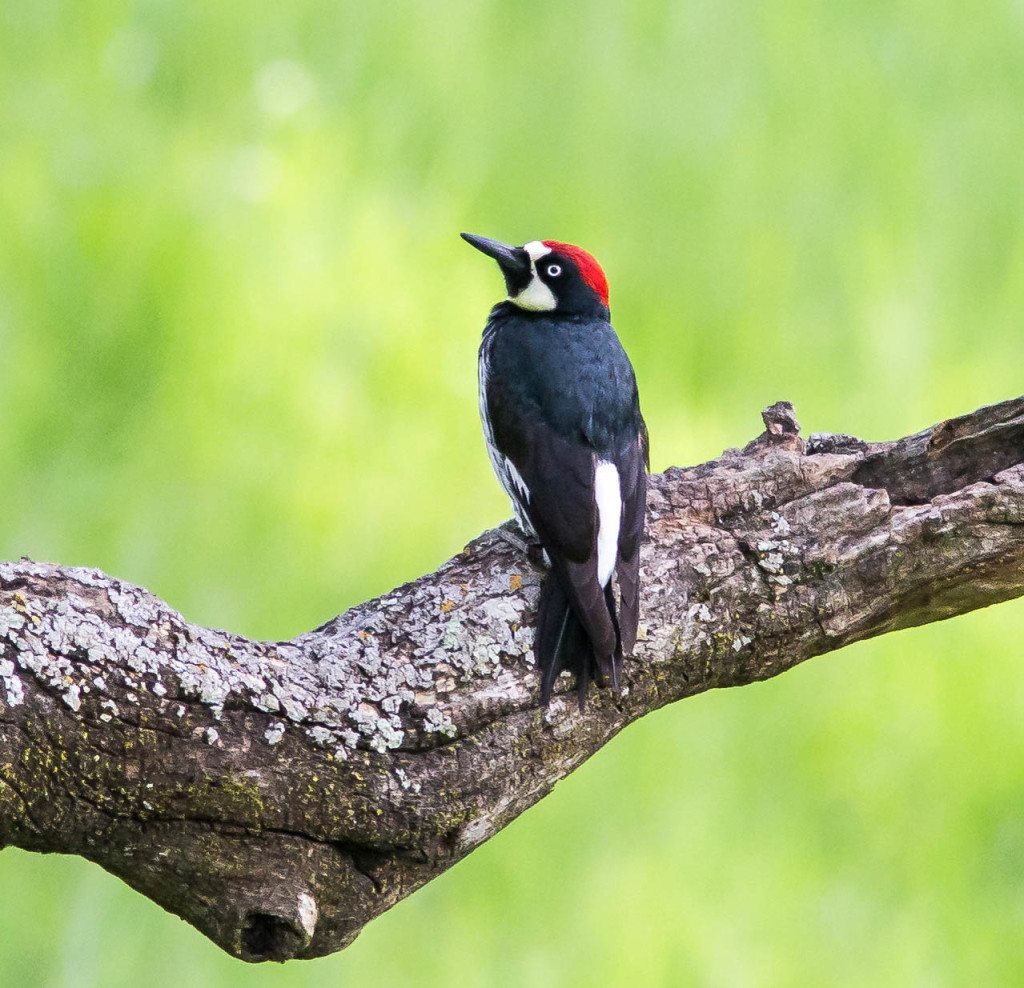 Acorn Woodpecker at Sycamore Valley Open Space Preserve (Danville) / Photo by Larry and Dena Hollowood, www.flickr.com/photos/larry_dena/
Acorn Woodpecker at Sycamore Valley Open Space Preserve (Danville) / Photo by Larry and Dena Hollowood, www.flickr.com/photos/larry_dena/
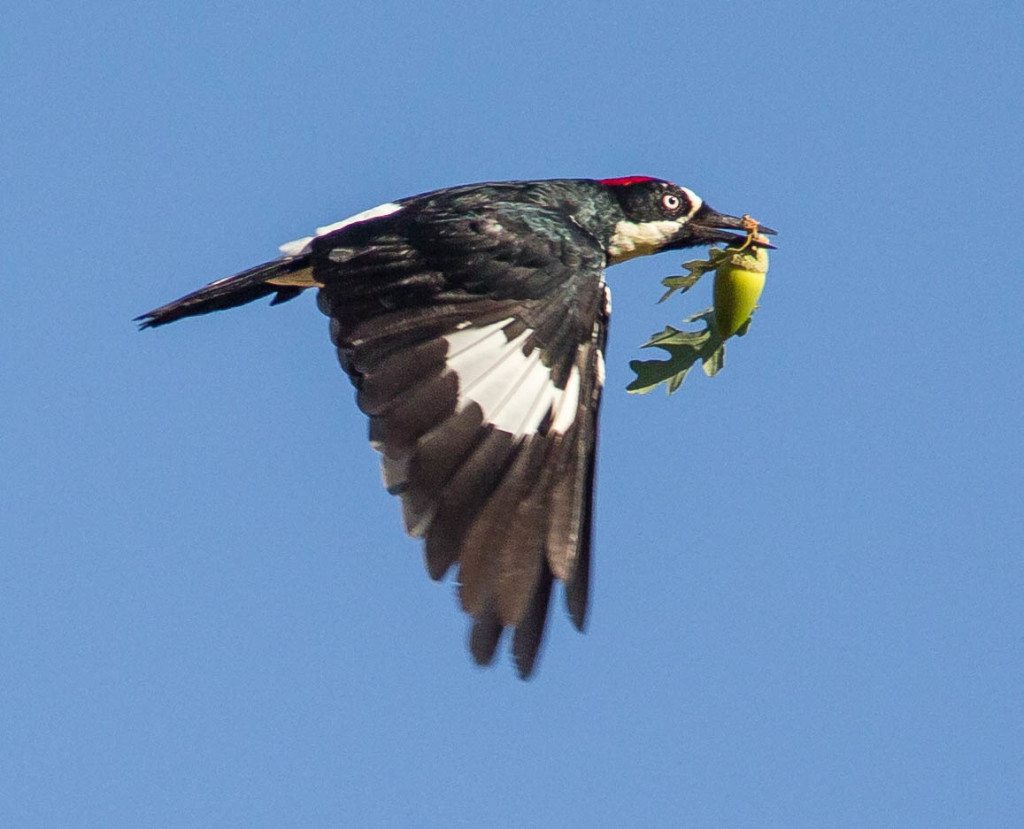 Acorn Woodpecker carrying an acorn / Photo by Larry and Dena Hollowood, www.flickr.com/photos/larry_dena/
Acorn Woodpecker carrying an acorn / Photo by Larry and Dena Hollowood, www.flickr.com/photos/larry_dena/
Beginning around September 1st, Acorn Woodpecker reports started rolling in from multiple East Bay sites from Oakland to Richmond. The irruption hit San Francisco by September 12 when twelve birds were noted flying over Battery Godfrey. S.F. birders started finding bands of Acorns in Buena Vista Park, Lincoln Park, and Golden Gate Park, and solo flyover birds were all over town.
This irruption is particularly noteworthy because Acorn Woodpeckers are not migratory. What’s driving it? The most likely answer is acorn crop failure.
True to their name, Acorn Woodpeckers are acorn specialists. They develop communal granaries that may consist of tens of thousands of holes drilled in tree trunks and limbs, each stuffed with an acorn. Only about half their diet actually consists of acorns — the other half is made up of fruit, insects, and other vegetable matte r— but the acorn granaries are the staple food source that gets them through lean times. Again quoting BN:
…[i]n areas where there are large seasonal fluctuations in insects and other foods, year-round residency is dependent on the birds’ ability to store sufficient acorn mast to provide food throughout the winter. Groups that exhaust their stores often abandon their territories and wander off in search of alternative food.


